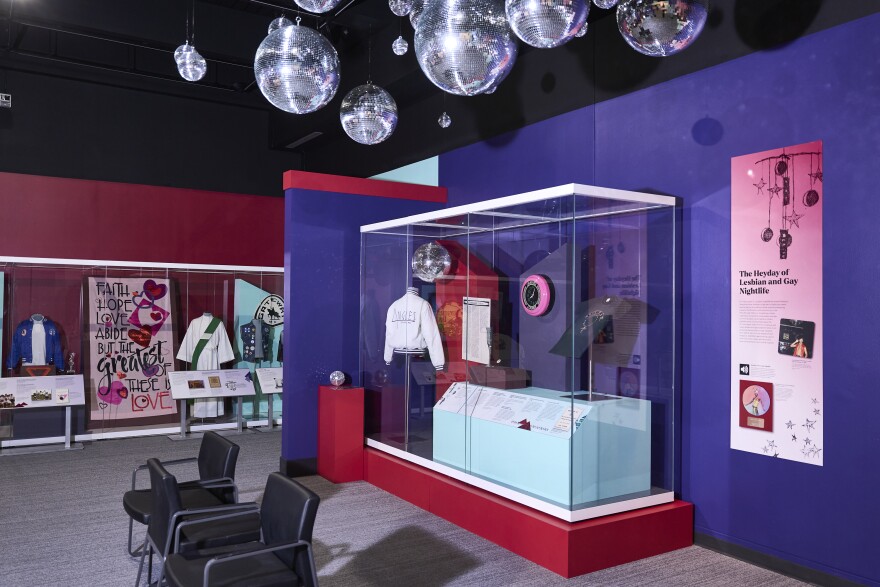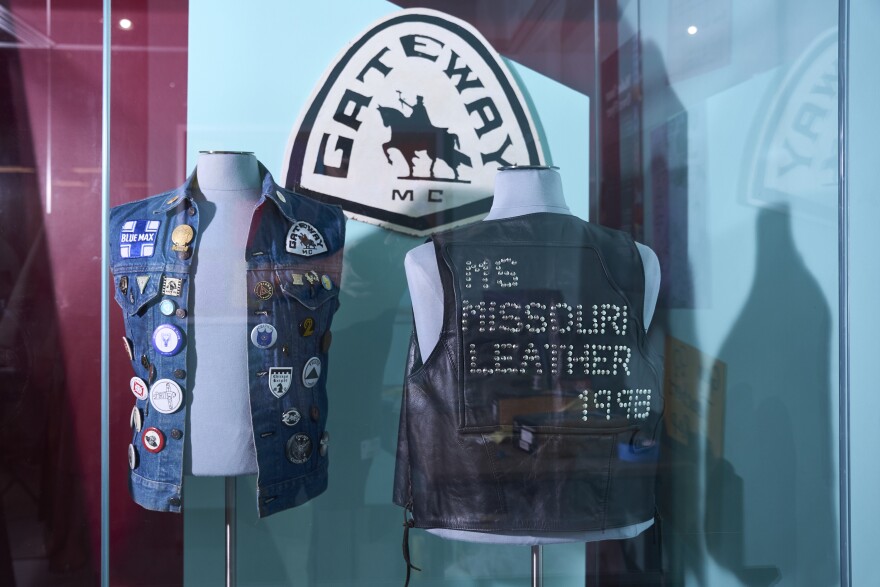Before the Stonewall Riot in 1969, queer love, experiences and struggles for civil rights were woven into the fabric of American — and St. Louis’ — culture. Miss Fannie’s Ball was popular among Black St. Louisans. Starting in the 1950s, drag performers would raise money for Black communities at the event. Today, Miss Fannie’s Ball continues to maintain its significance in both Black and queer St. Louis by showcasing talents in female impersonation.
This slice of queer life — past and present — is on display with hundreds of artifacts and recordings of oral history in the Missouri History Museum’s Gateway to Pride exhibit, which opens Saturday, June 8.
Sam Moore, the Missouri Historical Society’s managing director of public history, told St. Louis on the Air that while Gateway to Pride is the museum’s first exhibit focused on LGBTQIA+ life in the St. Louis region, it certainly won’t be the last.
“When you walk into Gateway to Pride, there's a big sign that says ‘St. Louis history is LGBTQIA+ history.’ Understanding this history, understanding the lived experiences of queer people in St. Louis for the last 200 plus years, helps you understand the St. Louis you live in today,” Moore said. “Whether you are a member of the LGBTQIA+ community, whether you're straight, it's important context for this place. Everyone deserves to have their story told, and hearing other people's stories helps you understand your own life better.”


He and a team of historians collected artifacts that tell stories of diverse queer experience in the St. Louis region. One of those historians is Ian Darnell, who now serves as the assistant curator of the LGBTQIA+ Collections at the Missouri Historical Society. His interest in queer history goes back to 2007. He was studying history in college when he came out publicly to friends and family as a gay man.
“For so many queer people, they don't see themselves in the history that they learn when they're in elementary or high school — even when they're in college [or] in the historical monuments and sites around the region,” Darnell said. “In history, we really learn who we are and we understand the context for our own lives. So it is essential to see ourselves in the past. I think that many queer people have a hunger to learn about queer history and maybe most especially queer history in the places where they live their own lives.”
The stories and artifacts come from all over the St. Louis metropolitan area. Vests from the Ms. Missouri Leather competitions, coming out letters, recordings from queer musicians, art from Act Up protests, and gowns worn by beloved drag queen and queer activist Michelle McCausland.
“We have stories about the Metro East and Illinois. In 1961, the state of Illinois became the very first state in the country to legalize sex between members of the same sex. It was very pioneering in that way,” Darnell shared “We also tell stories about the present day of annual pride festivals in places like St. Charles and Belleville, Illinois.”
“This exhibit is for everyone, regardless of your sexual orientation, or gender identity. And I think people who are not a part of the LGBTQIA+ community will still have a lot to learn from this exhibit and a lot to enjoy,” Darnell said. “If you really want to understand St. Louis, you have to understand the struggles and the achievements of LGBTQIA+ people.”
For more on the stories and artifacts in the Gateway to Pride exhibit — including love letters to Olympic gold medalists Helen Stephens and memoirs from gay writer Claude Hartland in 1901 — listen to St. Louis on the Air on Apple Podcasts, Spotify, YouTube or by clicking the play button below.
Related Event
What: Gateway to Pride opening weekend
When: June 8 and 9
Where: Missouri History Museum (5700 Lindell Blvd, St. Louis, MO 63112)
“St. Louis on the Air” brings you the stories of St. Louis and the people who live, work and create in our region. The show is produced by Ulaa Kuziez, Miya Norfleet, Emily Woodbury, Danny Wicentowski, Elaine Cha and Alex Heuer. Roshae Hemmings is our production assistant. The audio engineer is Aaron Doerr.






